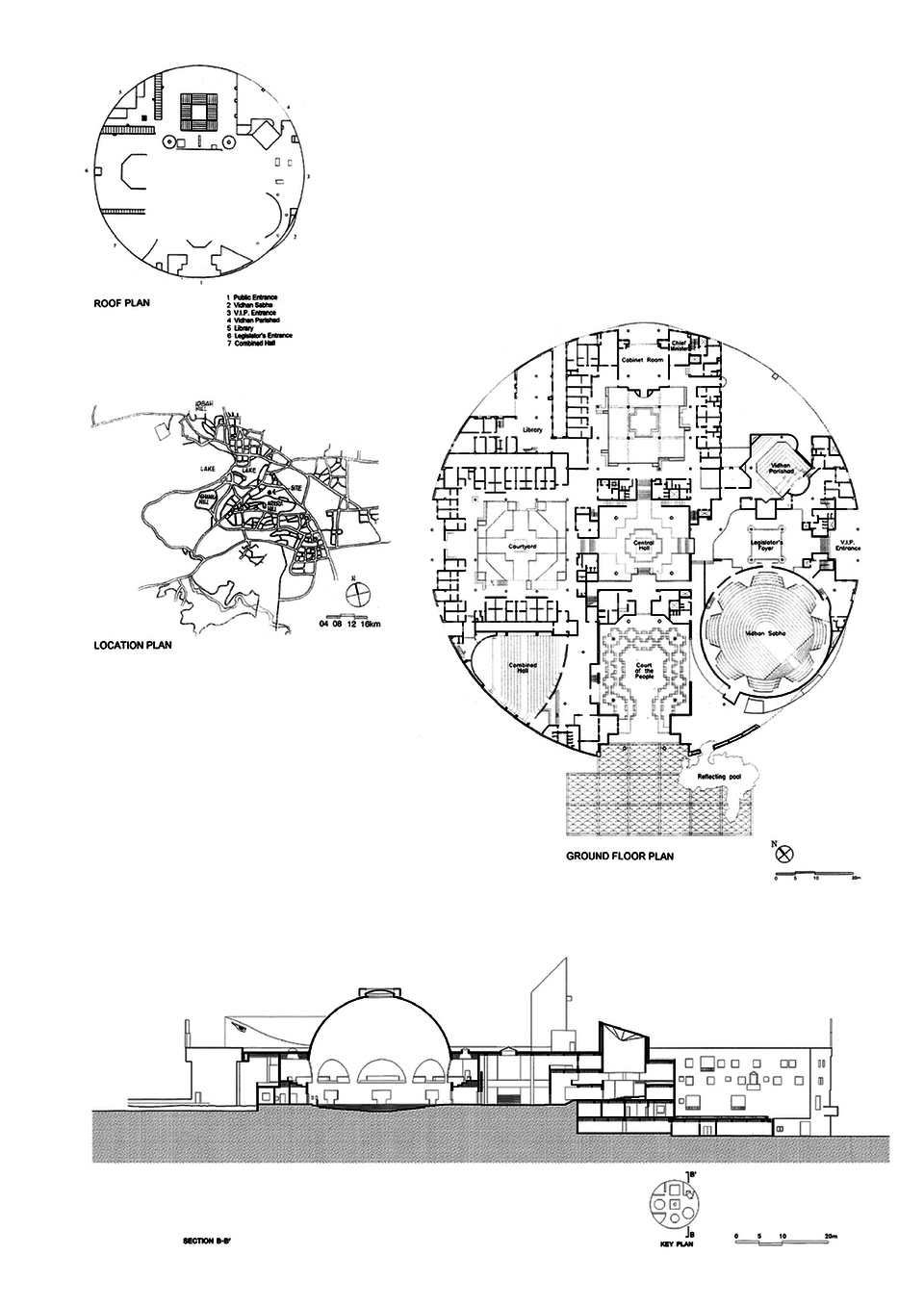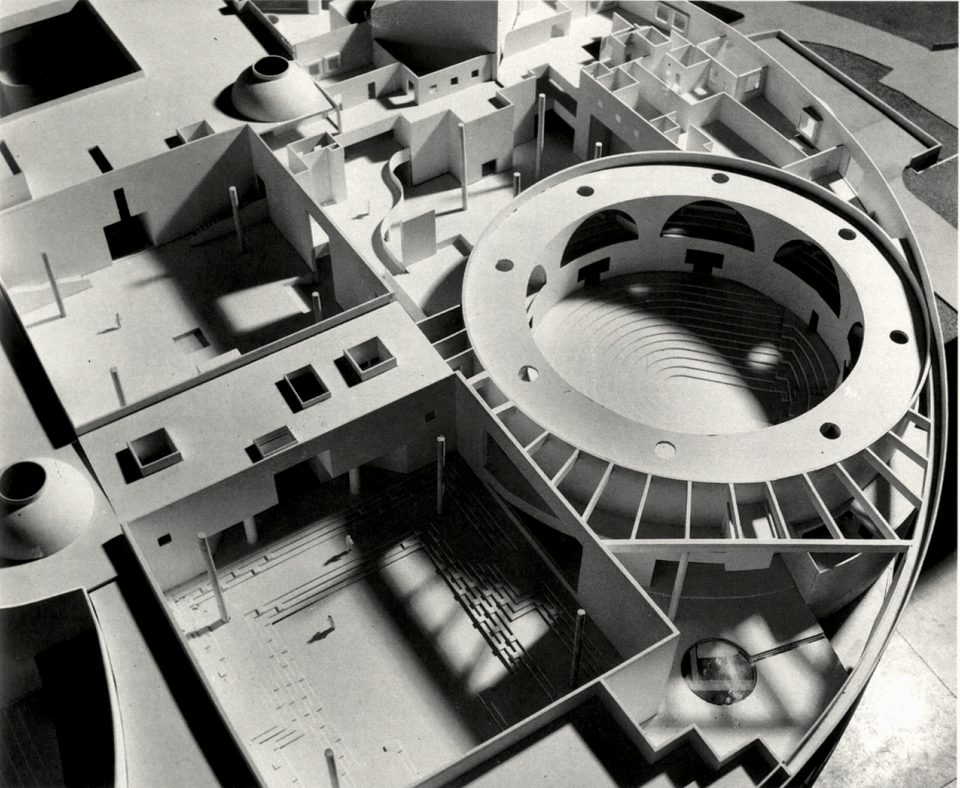The new State Assembly, in the capital city of Bhopal, for the Government of Madhya Pradesh was commissioned in 1980 but did not begin construction until 1983. Many factors determined its form: its site on the crest of a hill; the historic Muslim monuments nearby; and the famous Stupa of the Buddha at Sanchi, some fifty kilometres from the city. But perhaps the greatest deter minant of form was the mandala - the cosmic organisation of functions, sequences and spaces within the ancient Hindu conception of the Universe.
The plan consists of a series of spaces within spaces, divided into a pattern of nine compartments (common in mandalas) which focus around a centre which represents nothingness. On two perpendicular axis, emanating from a central courtyard, are the administrative offices. The remaining four corners are occupied by the specialised functions: the Vidhan Parishad (Upper House), the Vidhan Sabha (Lower House).



